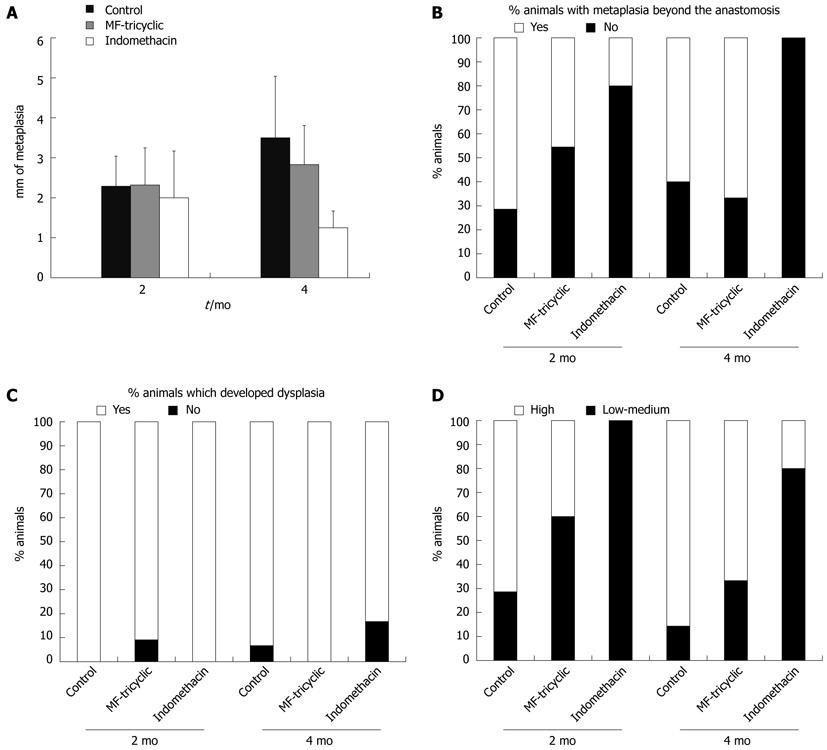Copyright
©2012 Baishideng Publishing Group Co.
World J Gastroenterol. Sep 21, 2012; 18(35): 4866-4874
Published online Sep 21, 2012. doi: 10.3748/wjg.v18.i35.4866
Published online Sep 21, 2012. doi: 10.3748/wjg.v18.i35.4866
Figure 3 Macroscopic findings.
A: Effect of treatment on metaplasia in continuity length. A significant decrease was observed in indomethacin-treated groups compared to control groups (P = 0.007); B: Treatment effect on the percentage of animals that developed metaplasia beyond the anastomosis. Percentage of animals that developed metaplasia beyond the anastomosis was significantly higher in both control and MF-tricyclic groups (P = 0.009 and P = 0.036, respectively); C: Percentage of animals that developed dysplasia; D: Because most animals developed dysplasia, low-to-medium grade vs high-grade dysplasia was analyzed. Percentage of rats that developed high-grade dysplasia was significantly lower in indomethacin groups compared to control groups (P = 0.002). When we analyzed the effect of treatment, we observed lower incidence of neoplasia in the indomethacin group (P = 0.000). MF-tricyclic: 3-(3, 4-difluorophenyl)-4-(4-(methylsulfonyl)phenyl)-2-(5H)-furanone.
- Citation: Esquivias P, Morandeira A, Escartín A, Cebrián C, Santander S, Esteva F, García-González MA, Ortego J, Lanas A, Piazuelo E. Indomethacin but not a selective cyclooxygenase-2 inhibitor inhibits esophageal adenocarcinogenesis in rats. World J Gastroenterol 2012; 18(35): 4866-4874
- URL: https://www.wjgnet.com/1007-9327/full/v18/i35/4866.htm
- DOI: https://dx.doi.org/10.3748/wjg.v18.i35.4866









